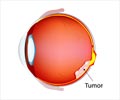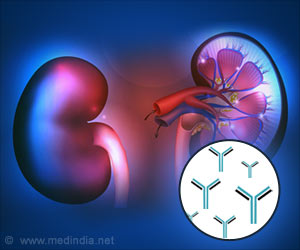A research team has identified a certain mechanism that triggers eye movement disorders and this discovery could lead to rectification of movement disorders in different parts of the body.

The findings could provide the key to reversing the condition and unlocking the causes of movement disorders in other parts of the body.
The research is published in Proceedings of the National Academy of Sciences.
As nerves develop in the womb they respond to signals that tell them in which direction to grow. Some signals encourage them to grow to a particular part of the body, while other signals tell them to avoid certain areas.
When the system works as it should, the right type of nerve grows to the appropriate part of the body.
The surface of growing nerves includes identification receptors that respond to signals from secreted proteins. The protein mutated in Duane Syndrome acts as a switch that weighs up incoming signals from the receptors – in this way the nerve knows whether it must grow towards a part of the body or be repulsed away.
Advertisement
This recent research has provided new insights into how this 'switch signal' system works and how it has failed in cases of Duane Syndrome, causing the 'wiring up' of the wrong muscle or 'overshooting' of nerve development past the correct muscle.
Dr. John Chilton, senior lecturer at the University of Exeter Medical School, commented: "We have focused our research on eye movements and conditions such as Duane Syndrome because it is a relatively simple anatomical system – six muscles controlled by three nerves - and there is not much cross over with other nerves in the developing head. Our findings are exciting for two reasons: the first is that they provide real hope for the development of therapies that could reverse eye movement disorders; the second is that, with additional research, they could be applied to other, more complex nerve and muscle groups that control, say, legs or arms. The scope could be phenomenal."
Sarah Guthrie, Professor of Developmental Neurobiology at King's College London said: "Investigating the signalling pathways that regulate alpha2-chimaerin helps us to understand defects in the cranial nerves which lead to eye movement disorders and visual problems. The results of this early study are very exciting, and could have an impact on the approach to treating eye movement disorders and other nerve wiring defects in the future."
Duane Syndrome is an eye movement disorder that causes eye muscles to contract and relax when they should not. It develops in the womb where it affects nerve growth in the eye. Sufferers of the syndrome have limited eye movement sideways towards the ear or nose. When the eye moves towards the nose the eyeball pulls into the socket, closing the eyelids and sometimes forcing the eye movement up or down.
Duane Syndrome usually causes vision problems. It can be accompanied by malformations of the skeleton, eyes, ears, kidneys and nervous system but more commonly occurs in isolation.
Most sufferers of the condition are diagnosed by the age of 10. It is more prevalent in women and in the left eye. It is believed to affect around half a million people worldwide.
Source-Eurekalert











